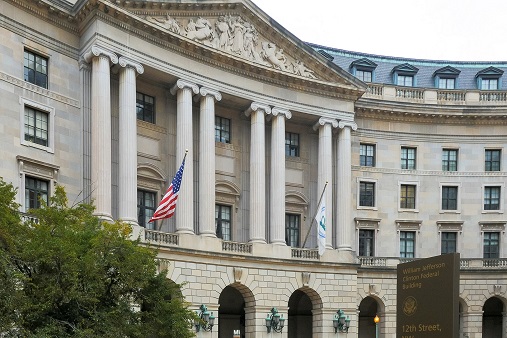Note: This article appears in the April 2016 edition of Barnes & Thornburg LLP's Construction Law Update e-newsletter.
Westfield Insurance Company v. National Decorating Service, Inc., No. 1:2014cv01572 (November 25, 2015 N.D. Ill.) (Judge Robert Blakey) holds that, under Illinois law, allegations that a subcontractor’s defective work caused property damage to a building or project outside the scope of the subcontractor’s own work triggers the duty to defend contained in the subcontractor’s general liability insurance (“CGL”) policy. The decision provides an in-depth discussion of this issue, an issue that remains uncertain under Illinois law.
The decision specifically rejects the argument that property damage to any part of a building or structure allegedly caused by a subcontractor’s defective work cannot be covered accidental “occurrence” under the CGL policy. The decision analyzes several Illinois decisions that the insurance company asserted hold to the contrary, and concludes that these cases do not address or accurately state Illinois law. According to the decision, [i]n each case, the Court relied on the general language from earlier cases that a contractor’s damage to a “building” or “project” that results from its defective construction is not a covered ‘accident.’ The cases, however, did not analyze the source of that language, let alone the significance of the distinctions this Court draws today.” Id. at *6 (citing the following cases: Acuity v. Lenny Szarek, Inc., No. 13-7505, ___ F. Supp. 3d ___, 2015 WL 5163195, at *7 (N.D. Ill. Sept. 2, 2015); American Fire & Casualty Co. v. Broeren Russo Construction, Inc., 54 F. Supp. 2d 842, 848-49 (C.D. Ill. 1999);American Family Mutual Insurance Co. v. Hummel Development Group, LLC, No. 11 CH 24601, 2013 WL 6631068, at *4-6 (Ill. Cir. Ct. Nov. 21, 2013); QBE Insurance Corp. v. Barrier Corp., Nos. 11 CH 9383, 11 CH 41501, 2012 WL 6900226, at *1, 8-9 (Ill. Cir. Ct. Nov. 19, 2012)). (Links accessible with Thomson Reuters Westlaw subscription.)
The decision therefore holds that there is an “occurrence” and potential insurance coverage (and, hence, a duty to defend) when claims against a subcontractor include allegations of property damage outside the subcontractor’s scope of work. This is potentially good news for insured subcontractors in Illinois, as the analysis of this issue by the Illinois courts remains unclear. Whether or to what extent Illinois decisions will follow Westfield remains to be seen.
Unfortunately, the federal court was required to reach its conclusion in Westfield based on the incorrect analysis of insurance coverage for construction defect claims that exists in Illinois. In short, for completed operations claims, the standard CGL policy is intended to provide potential insurance coverage for the general contractor for property damage that arises out of the work of its subcontractors on a project. As we have discussed in other articles, the CGL policy, when properly read as a whole, specifically anticipates the “occurrence” of property damage unintentionally caused by defective construction work, and then defines the scope of that coverage through the policy exclusions that specifically address coverage for construction defect claims. The exclusions include an exception to the “your work” exclusion for property damage caused by the named insured’s subcontractors.
Several Illinois decisions incorrectly turn the actual policy intent on its head by looking at the named insured’s scope of work and the alleged damages to determine whether there was an accidental “occurrence.” This incorrect analysis is particularly harmful to general contractors. Based on this analysis, several Illinois cases hold that there cannot be an accidental “occurrence” if the named insured is a general contractor and the alleged damage was to any part of the project or building itself. Even when it is undisputed that the alleged property damage was caused by an insured general contractor’s subcontractors, some cases hold that there can be no “occurrence” unless the claims allege property damage to something outside the policyholders’ scope of work.
Unfortunately, Westfield therefore reaches the correct conclusion for the wrong reason. A correct legal analysis would recognize that there is an accidental “occurrence” under the CGL policy coverage grant whenever a claim alleges that a general contractor and/or a subcontractor caused property damage by accidentally (not intentionally) performing faulty construction work. Whether or not coverage exists for the claim would then be determined by examining the construction specific policy exclusions. Unless some other exclusion applied to bar coverage, in the completed operations context a general contractor would have coverage for property damage caused by the work of its subcontractors under the subcontractor exception found in the “your work” exclusion. An insured subcontractor likely would also have coverage, but only to the extent its work caused property damage to something outside of its own scope of work. The reason for this conclusion is not that the claim does not otherwise allege an accidental “occurrence.” Rather, this conclusion is required because property damage to the subcontractor’s own work is specifically excluded under the “your work” exclusion. (The subcontractor exception does not apply where the policyholder is itself a subcontractor.)
Several supreme courts in other states have changed and corrected prior incorrect law on this issue. Whether or when the courts or the legislature will correct Illinois law remains unknown.
For more information about this topic and the issues in this article, please contact Clifford Shapiro in our Chicago office at (312) 214-4836 or clifford.shapiro@btlaw.com.
Visit us online at http://www.btlaw.com/constructionlaw.
© 2016 Barnes & Thornburg LLP. All Rights Reserved. This page, and all information on it, is proprietary and the property of Barnes & Thornburg LLP. It may not be reproduced, in any form, without the express written consent of Barnes & Thornburg.
This Barnes & Thornburg LLP publication should not be construed as legal advice or legal opinion on any specific facts or circumstances. The contents are intended for general informational purposes only, and you are urged to consult your own lawyer on any specific legal questions you may have concerning your situation.













